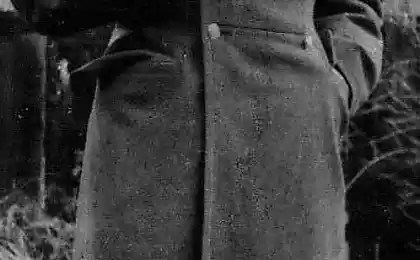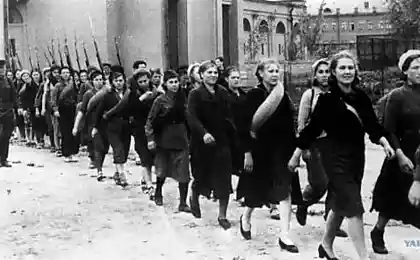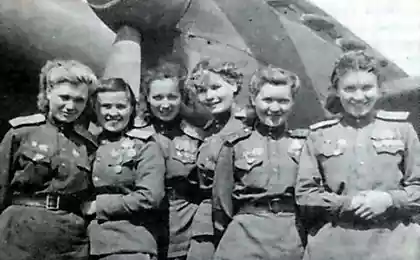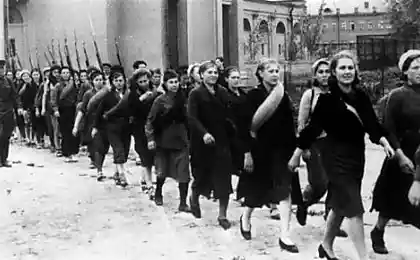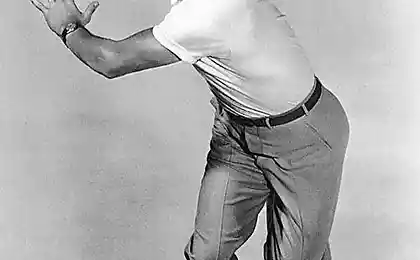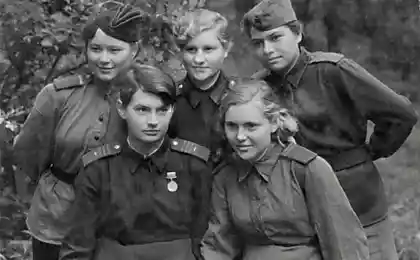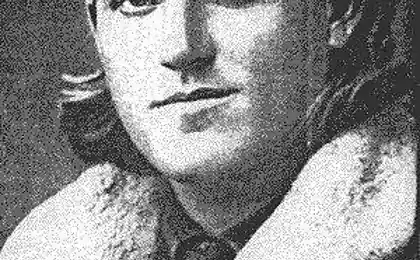1397
Revive me if you can
Six "sleeping" car brands ready to return.
In 2012, Nissan has decided to revive the brand Datsun, and has now introduced several production vehicles, and even the concept car "new" brand. Due to the fact that soon there will be on the road cars, disappeared in 1980, "Motor" Remember that even "sleeping" brands have the largest automakers in the cage. And at the same time assess the probability of their revival.
Not mine. Thanks to this site.
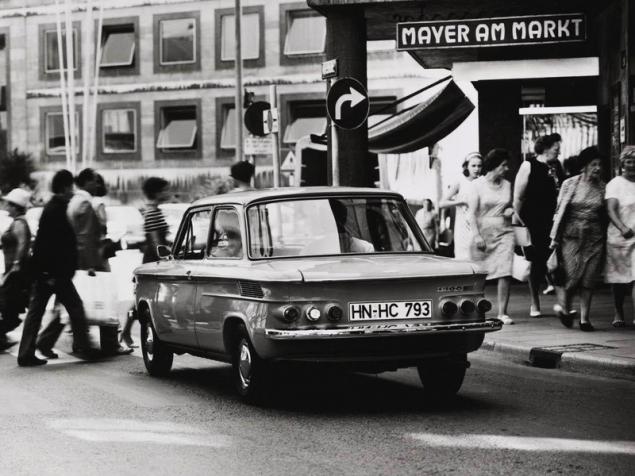
NSU
Who owns: Audi
Years of living: 1905-1977
Chance of rebirth: close to zero
In Germany, over the years were born and died a lot of car brands for which we do not miss something that is not - not even remember them. The same fate would wait and NSU, if not two models: Prinz and Ro 80. It was the first prototype of our "eared" "Zaporozhets" and the second - is the only rotary car won the European competition "Car of the Year».
Company NSU was formed in 1878 - as a manufacturer of sewing machines, and in 1880 moved to the city of Neckarsulm, which will continue to be linked to her story. With sewing machines NSU first switched to bicycles, then motorcycles were added to the range, and the first car left the factory in 1905. Before World War II the company produced unremarkable car, so when Allied air bombardment forced the plant to stop production for a few years, no one was particularly upset. Besides workers NSU, of course. After the war, to the assembly of cars NSU returned only in 1957 - with the very model Prinz.
Inexpensive and compact car in Germany fell to the court, and cases from the company went to the mountain. During the first "prince" followed by a four-Prinz 4 model, which became the object of inspiration to the Zaporozhye engineers, and it was decided to have the money to invest in motorsports and advanced development. So there were sports Sport Prinz and TT. Last, a kind of "super-lock 'was a real storm giants. Extended track, boosted to 70 hp (in the racing versions of up to 90 horsepower) engine, a great drive axle load and weight of just 700 kilograms converted into a mini TT-Porsche.
But the main "trick» NSU steel rotary engines, because the rotor's father was an engineer Felix Wankel NSU.
The first serial NSU rotary engine began in 1964 Wankel-Roadster, but the real star was to be elegant beauty Ro 80.
Alas, the beautiful and progressive design of the car was unreliable and expensive to maintain. Despite the fact that by 1970 the problem was minimized, it was too late - the NSU factory was on the verge of collapse and was bought by Auto Union, which, in turn, in 1964, was part of the group Volkswagen. Wolfsburg took a tough decision: all brands of "Car union" right to life received only Audi, NSU and other brands of Auto Union - DKW and Wanderer - were subject to liquidation. Rear-engined models in the pipeline lasted until 1973, and the last Ro 80 left Neckarsulm in 1977. Now the city is the headquarters of the sports department of Audi - quattro GmbH.
The rights to the brand NSU still owned by Audi, but speculation about the rebirth of the brand management of the company dismiss. After all, no sense in this - branded clip VAG and so full, and automotive heritage NSU very controversial. So, if one day we will see NSU, it probably will not be cars, motorcycles and low-cost in addition to the exclusive Ducati. The postwar history of NSU full polar moments. On the one hand, the brand produced a miserable, but cheap cars like the Prinz ...
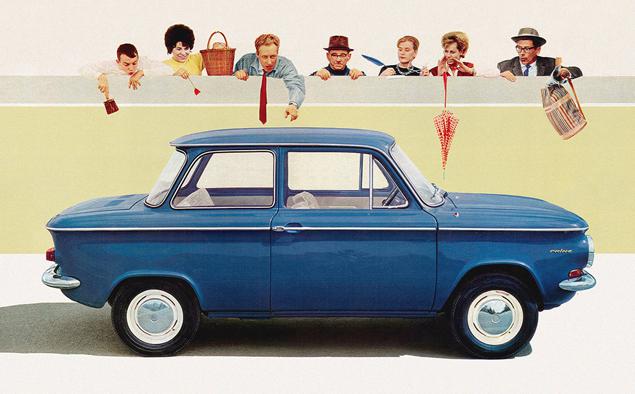
... On the other, the flagship brand was incredibly beautiful and technically sophisticated sedan Ro 80
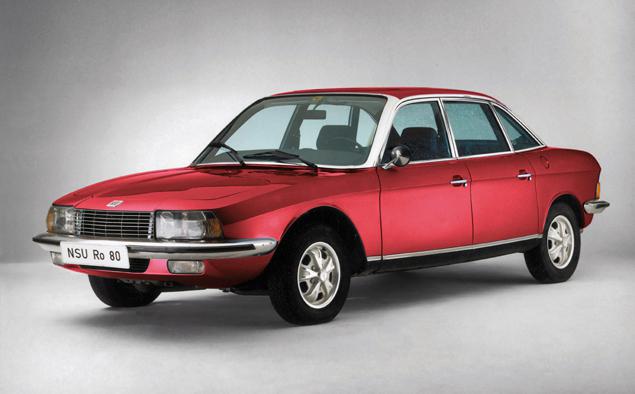
Front Prinz and ZAZ-968 is particularly similar. The "constipation" in the range even had a similar red color

But in the profile immediately clear that these are different machines, because Prinz no "ears»

Ro 80 charmed journalists spacious interior and quiet operation of the engine, for which he received the title of "Car of the Year»
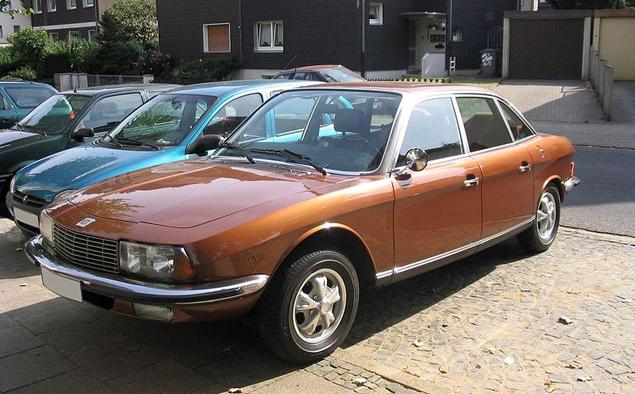
Buyers same car "pleased" high consumption of fuel and oil. But it was not so bad - the engine is difficult to withstand 50 000 kilometers without overhaul

NSU TT - «mad stool" of Nekarzulma. For better cooling of the forced "vent" bonnet was always ajar
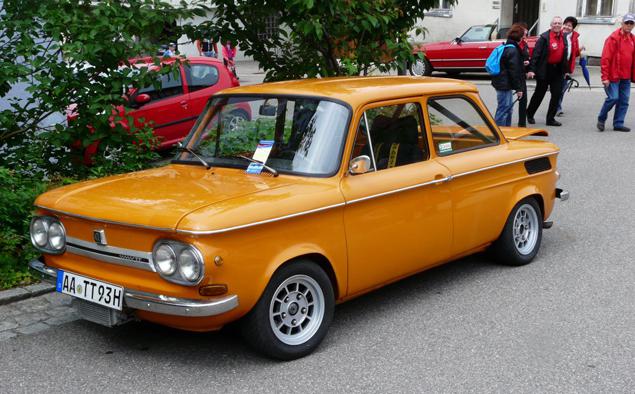
The TT livery Jagermeister - one of the cult heroes of German motorsport late 60s.
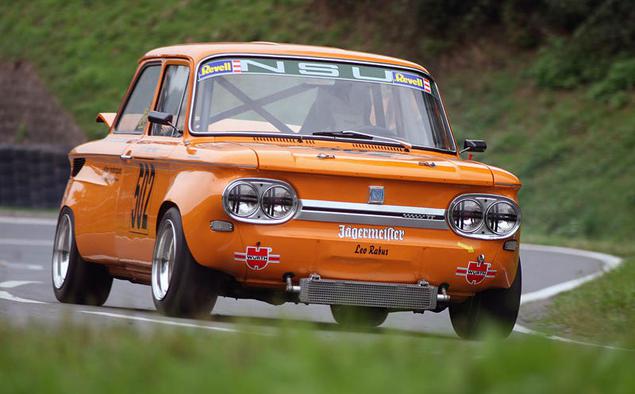
Sporting runabout can still be seen on the track recently including in the North loop.

Triumph
Who owns: BMW
Years of living: 1923-1984
Chance of rebirth: small
We will not hide the fact that miss little sports roadster in the UK. Yes, and by the British compact sports sedans, we would not have refused. All this could give us a Triumph, who made his name in the small but charming and fast cars. Roadsters TR series and the Spitfire, small sports saloon Herald and Dolomite, Italia coupe and GT6 - these machines is not enough.
Triumph Company was founded in 1886 when Siegfried Bettmann Germans began selling in England, German bikes under the brand Triumph. In 1902, Bettmann and his partner Moritz Schulte grown to produce motorcycles and in 1923 was born the first car company - model 10/20. In the 1930s the firm switched to luxury sedans and coupes, which, however, was not successful, as the luxury brands on the islands has been more than hounds at the royal kennels.
Triumph Company was founded in 1886 when Siegfried Bettmann Germans began selling in England, German bikes under the brand Triumph. In 1902, Bettmann and his partner Moritz Schulte grown to produce motorcycles and in 1923 was born the first car company - model 10/20. In the 1930s the firm switched to luxury sedans and coupes, which, however, was not successful, as the luxury brands on the islands has been more than hounds at the royal kennels.
The company experienced a permanent financial problems and in 1944 it bought the firm Standard (the same that after the war, lapped up the design of our "Victory" model Vanguard). It was then that Triumph became what he is known all over the world - a manufacturer of sports cars. Sport models of the brand perfectly sold in the colonies and dominions of the British Empire, one factory opened in South Africa, and even in the US roadsters TR series enjoyed steady demand.
Therefore, when the state acquired Leyland giant Standard-Triumph, it was saved last brand, and "Standard" have sunk into oblivion. The next two decades, Triumph created a fast, technically difficult, but, alas, unreliable machines. Verhnevalnye 16-valve engine with fuel injection, disc brakes "in a circle" - in these technologies, nobody paid attention, because the machines are literally falling apart for a couple of years, the body will rot tin and sophisticated engines are regularly out of order. Sales fell reputation evaporate, and in 1981, the company has come to the point that began to produce under its own brand ... boring sedan Honda Ballade.
It was agony - three years later, the brand was liquidated. Rights to it remained in British Leyland, who in 1994 under the name Rover Group was sold to BMW.
After spending six years on pointless attempts to revive the corpse of "Rover" Bavarians parted company, selling Land Rover Americans from Ford, and MG and Rover - a British venture holding Phoenix. British investors are required to sell them a complete set of the legendary island of brands, but the MINI and Triumph Germans left behind. Who knows, maybe one day the Bavarians still dare to release a small rear-drive roadster cheaper Z4?
Posted in [mergetime] 1392043840 [/ mergetime]
What else have BMW?
Riley
Under this brand British Leyland group released a more comfortable version of the Austin and Morris. Including the classic MINI. In England, appear regularly rumors that BMW could revive a forgotten brand for luxury versions of MINI. But these are just rumors. Triumph Italia - one of the rarest cars of mark: it was released only 329 machines
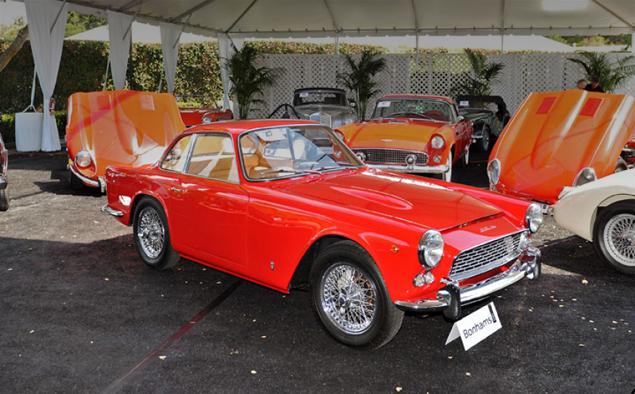
Technically identical to the coupe roadster TR3, but because of the body of Vignale it cost $ 1,000 more expensive
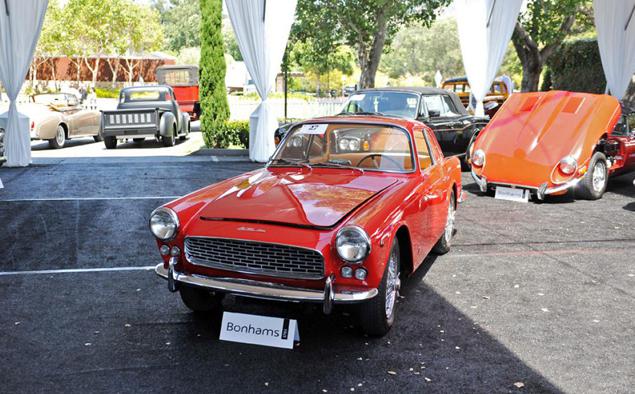
The top position of the camshaft and two large carburettor allows the engine Triumph TR3A to give 100 horsepower at two liters of volume
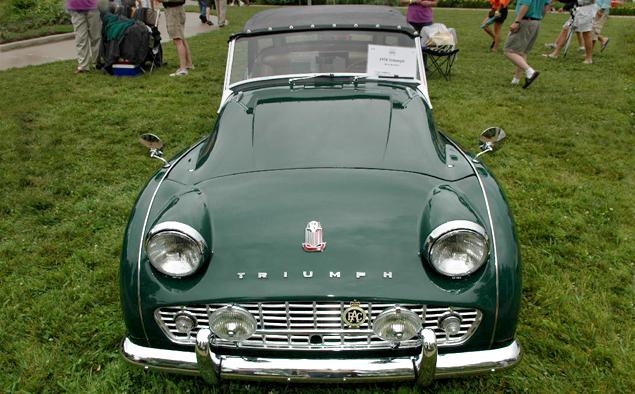
Popularity Triumph roadster forced to open additional plants for its production, two in Belgium and one in South Africa and Australia
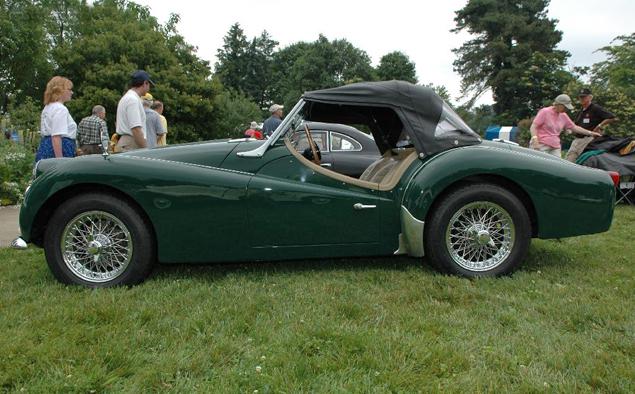
Family Herald was on the line from 1959 to 1964 and was completely devoid of sportiness.
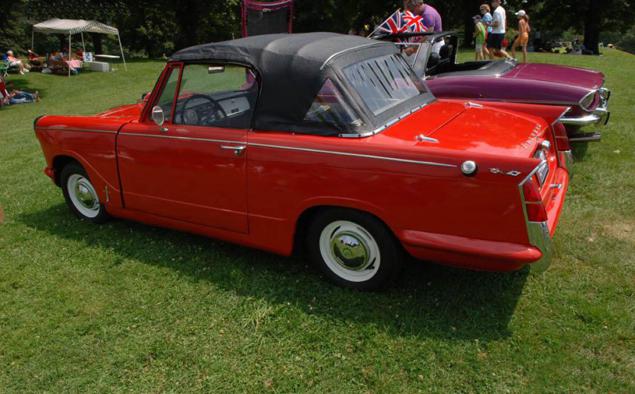
Herald produced in the back of a two-door sedan, a convertible and a three-door station wagon.
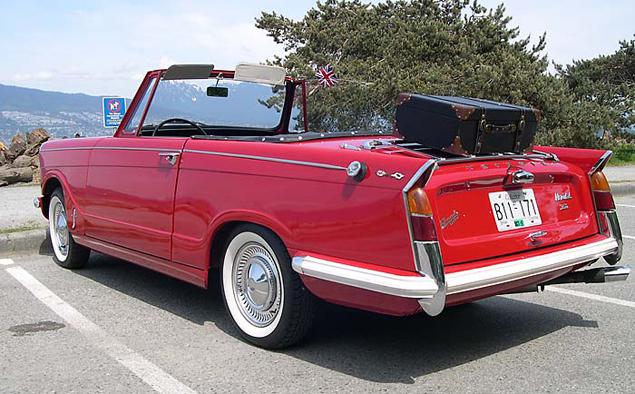
Triumph Dolomite Sprint - the first mass car with four valves per cylinder. From 1972 to 1980, was released almost 23 000 vehicles

The power unit gave out 135 horsepower and give in even greater force, the making of Sprint formidable fighter touring championships in those years
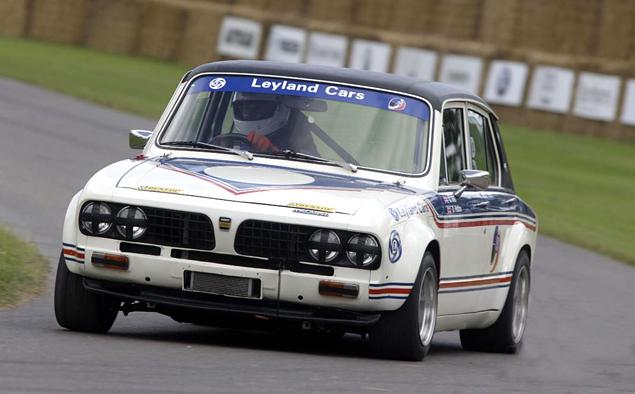
GT6 coupe were produced from 1968 to 1973 and has sold 31,000 copies
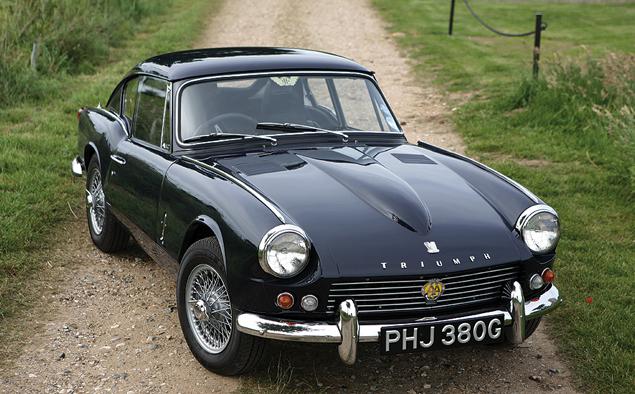
Spitfire Roadster assigned the role of a younger model in the line of open cars Triumph. In this photo, a model of the first generation (1962-1964)
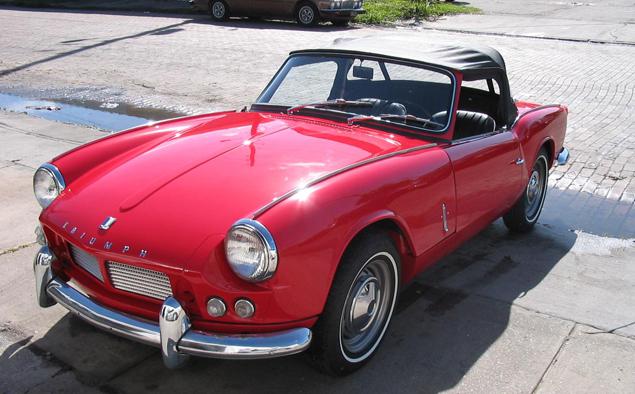
Despite the tiny motor (1, 1 liter), Spitfire enjoyed strong demand in the US
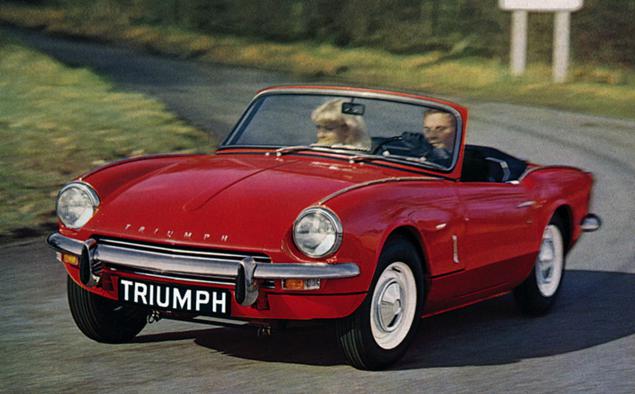
Triumph 10/20 - the first car brand

Model 10/20 has a four - cabin was located behind the hinged "Teschin place»

TR3A Roadster enjoyed the crazy demand in the US
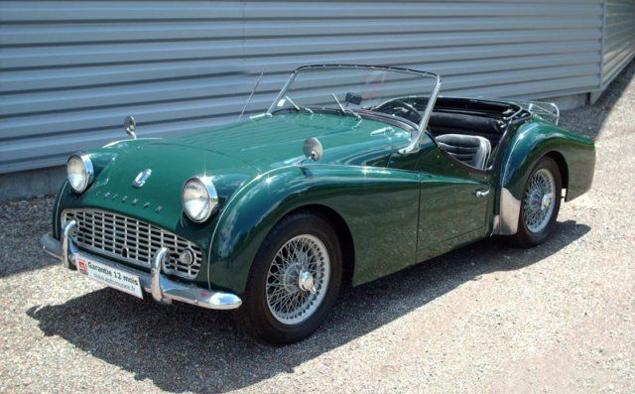
The roadster was not lifting the side windows. In case of bad weather they had to be screwed together with the frame
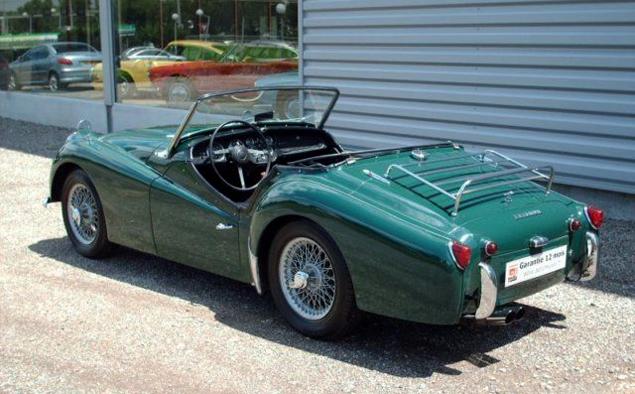
Honda Ballade was not so terrible, and the car, but the fact that Triumph has released before, it does not compare
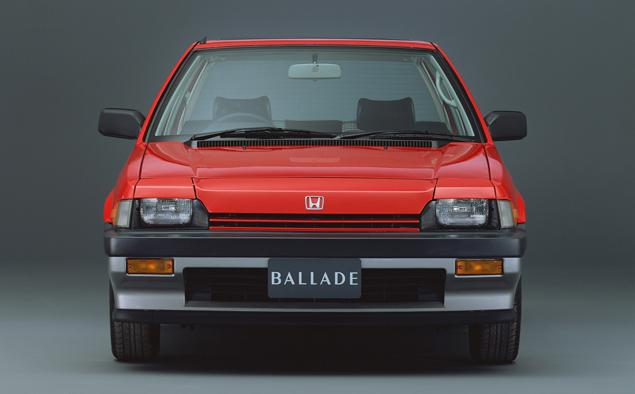
From 1981 to 1983, it was issued 214,000 sedans Triumph Acclaim. Ballade was much more popular

Technically Ballade / Acclaim repeated Honda Civic. All the differences are in design

Large sedan Riley 4 boasted designed by Pininfarina

Riley Elf - this is Austin Mini with the ugly luggage and improved bundle

Talbot
Who owns: PSA
Years of living: 1903-1992 (with a break in the years 1960-1978)
Chance of rebirth: great
Perhaps of all the brands in our survey was Talbot gives the greatest marketing freedom. Over the years, produced under this brand and the luxury coupe segment of ultra-luxury, and budgetary hatchbacks and sports cars. It all began with the French car Clement-Bayard, which were sold in the UK under the name Clement-Talbot. In 1919, the British importer has bought Paris carmaker Darracq (the owners of which, however, were English), and the car got a double name Talbot-Darracq. Next name change occurred in 1935, when the brand was in the hands of Antonio Lago.
Under the name Talbot-Lago company produced luxury cars, and even in 1950, took part in the first season of Formula 1 (though the results of the patriots of France, it is better not to remember). But the celebration of a beautiful life ended in 1958 when the brand fell into the hands concern Simca. The new owners have made Talbot in luxury version of the model manufacturer Simca. In 1967, the group bought both brands Chrysler, dreamed of building a European empire, and after the collapse of the separation Chrysler of Europe and its sales group PSA Peugeot Citroen Talbot dropped even lower in the ranking. Talbot 80 - a budget-Samba and Horizon.
The last moment of glory for the Talbot - Constructors Championship in the World Rally Championship in 1981, when the Guy Frekelen and Henri Toivonen on the hot-hatch Talbot Sunbeam Lotus were stable pilots Ford. However, personal title yet sailed to Mark Allen in the Escort. In the mid-80 production cars Talbot was stopped - a new model of Arizona entered the market under the name Peugeot 309, and the last was the van Talbot Express (Fiat Ducato).
Recently there were rumors that the brand will revive the Talbot for the production of low-end models PSA, but sedans C (408 / C4 Sedan) and B (301 / C-Elysee) have entered the market under the familiar brands of Peugeot and Citroen. On the one hand, PSA is not up to fat, on the other hand, a successful project like Dacia budget could become a life-saving straw.
What else is there left from PSA?
Simca
The second fragment of the European Chrysler - brand Simca - no such history, no such success in the race, nor of such stunning cars like Talbot. Therefore, the probability of revival "Simcoe" close to zero. These luxury cars Talbot-Lago produced before the war. The photo coupe T150C 1938
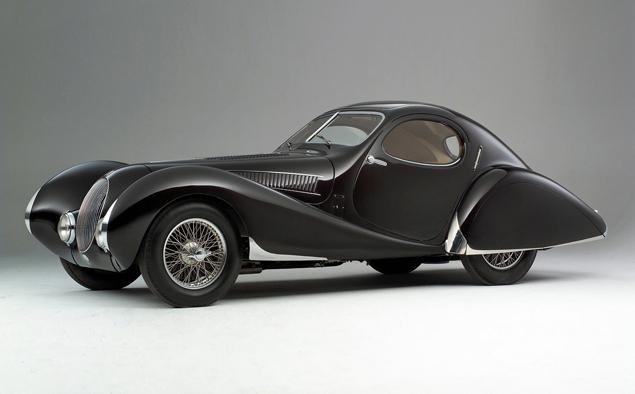
The authorship of the design studio owned by Figoni et Falaschi
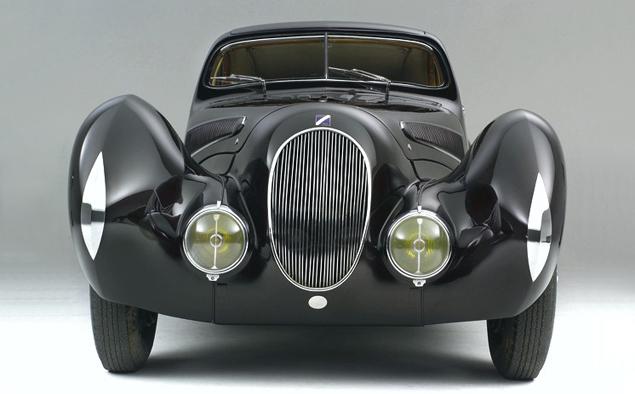
Talbot-Lago T26-C went out at the start of the first season in the history of Formula 1
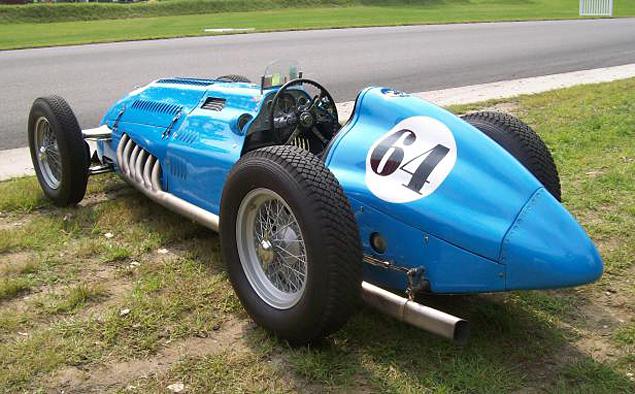
Louis Rosier even twice missed the podium at the Grand Prix of Belgium and Switzerland
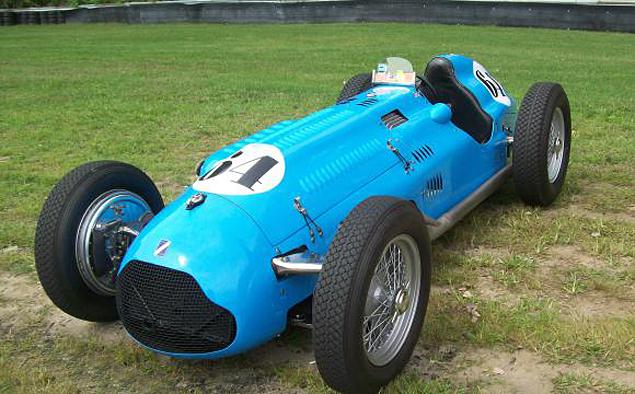
After just 30 years of its former greatness was gone

In vogue 80s arc security Talbot Samba has been fixed

Talbot Sunbeam even though he was a Frenchman by birth, but was manufactured in England
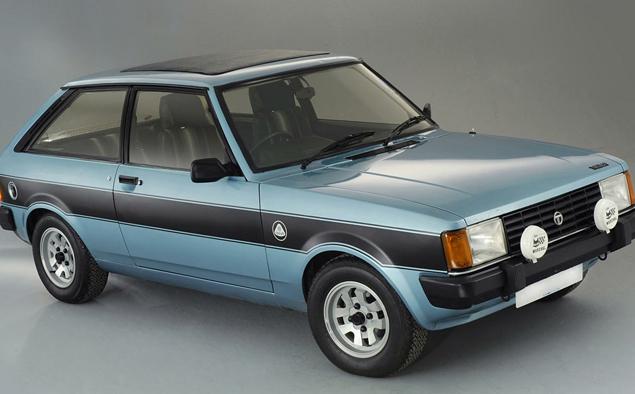
Talbot Sunbeam Lotus was terrible hot hatch - his engine gave out 150 horsepower

Motor rally version gave 250 hp. Interestingly, the leaders of the team crew Frekelen / Todt waiting for the fate of a successful sports managers
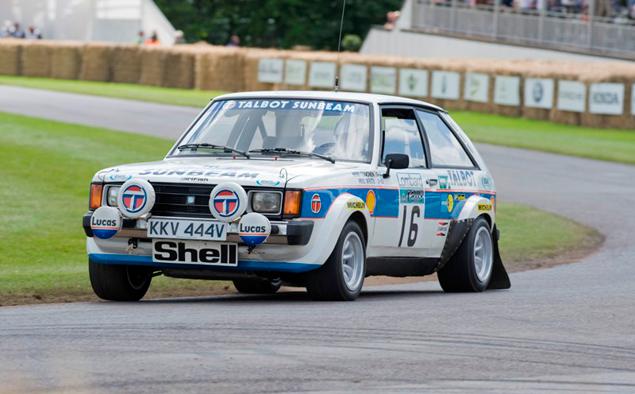
"Chip" sedan Aronde P60 - semi-automatic gearbox Simcamatic

Simca 1301/1501 - a real survivor. The model was produced from 1962 to 1975
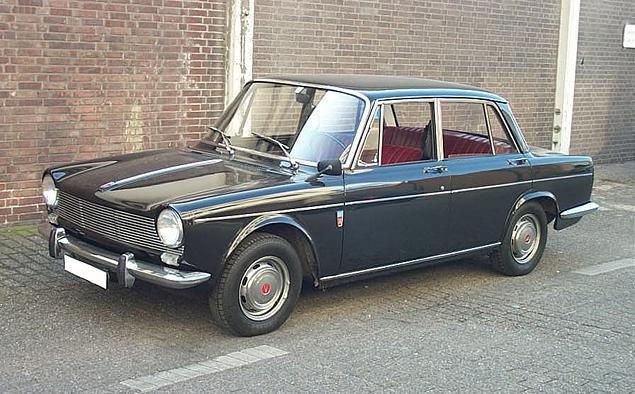
Simca 1307 - "Car of the Year" and the prototype of "Moskvich-2141»
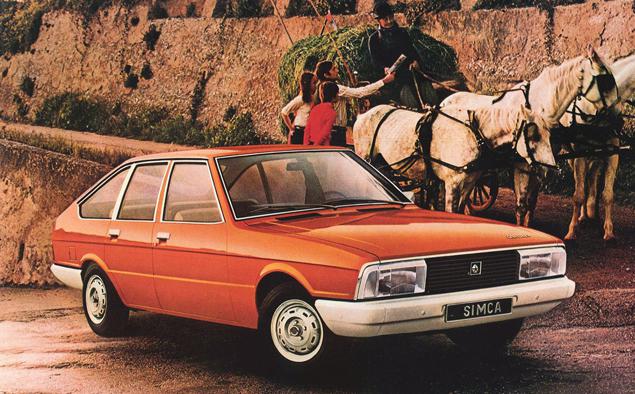
Daimler
Who owns: Tata
Years of living: 1896-2007
Chance of rebirth: a very large
"Aristocrats choose Daimler, nouveaux riches - Rolls-Royce». So we are talking about the British limousines in the 1950s. Daimler - one of the oldest manufacturers of the UK's favorite vehicles of several generations of British, Swedish and Danish kings, the real status symbol. But where did the German name is the same as that of Daimler AG? The fact is that the engineer Richard Sims bought Gottlieb Daimler the right to use its brand in the UK with all the patents for the internal combustion engine and samobegly crew, but did not pull the organization of production and sold all the rights to William Lawson, which began in 1896 production Car.
Already two years later, Prince Albert of Wales (the future King Edward VII) 6 Daimler chose HP as the personal transport. Up until the 1950s it was Daimler, rather than Rolls-Royce limousines were official ceremonial of the British court. But to achieve this mark crossed out problems with the transmission. After several failures of limousines "Royal Mews" (as the islands are called special purpose local garage) the role of ceremonial cars moved to Rolls-Royce. However, to mess Queen Elizabeth II Daimler still managed. Furthermore, Her Majesty so admired cars from Coventry, since then on an ongoing basis using Daimler's as personal transport. And until recently, the queen herself was not averse to sit behind the wheel of his Super Eight.
With the loss of the status of royal affairs supplier Daimler rolled down. In 1960, the brand has acquired Jaguar, and since then all the cars with the letter D on the grid was a copy of "wild cats" - the last own project was a limousine DR450. But in the 1960 - 1970 range Daimler was still wide. Luxury version were all models of Jaguar, including a coupe and a sedan based on the 420G was constructed luxury limousine DS420, whose was not in the "cat" scheme. That was the last DS420 Daimler, who happens to carry monarchs (but only Scandinavian) on formal occasions. In the last 10 years, Daimler's range has shrunk to a single model - the top-end version of the Jaguar XJ, is different from a donor just grille.
With the change of generation XJ lost twin brother, but Indians from Tata, bought in 2008, Jaguar-Land Rover (and owned JLR rights to the brand Daimler), have repeatedly stated that it is not averse to revive the brand to gather underneath limousines level Rolls-Royce Phantom and Bentley Mulsane. Not so long ago in the network got renders XJ c high roof especially for Chinese. Who knows, maybe this is the new Daimler? Something tells his appreciate not only the Chinese, but also British. And the most blue-blooded. This luxury limousine Light Straight Eight in the 1930 budget was considered a model in the range Daimler

Row "eight" volume of 3960 cubic centimeters gave out 95 horsepower
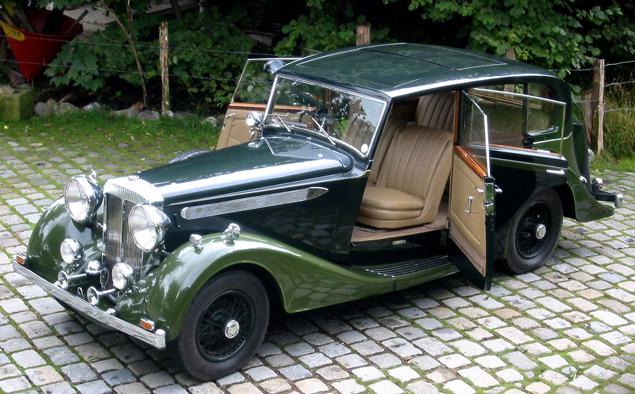
Among the owners of high-Light Straight Eight was the Lord Mayor of London
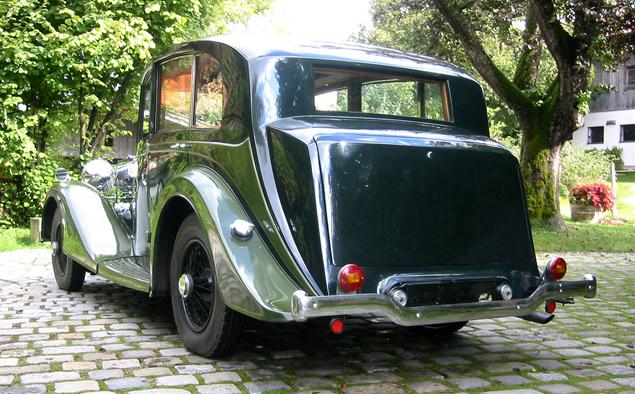
Last Daimler - Sedan Super Eight. Even the 10 differences from the Jaguar XJ is hard to find
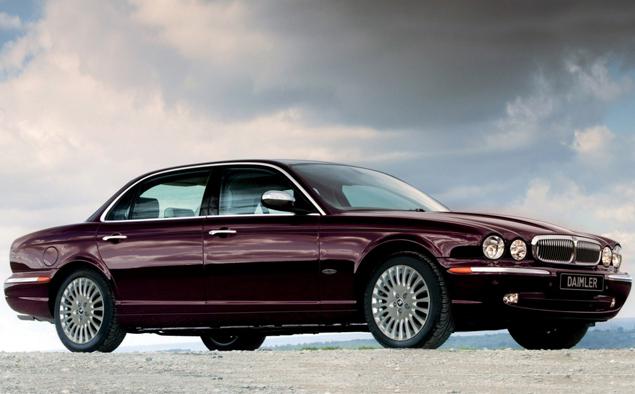
Compressor "eight» Daimler gave out the same 400 horsepower that XJR.

Limousine DR450 - a real giant, the length of the car more than 5, 7 meters
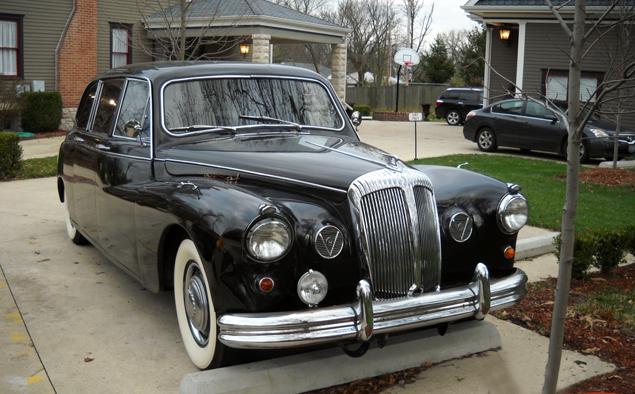
The big advantage of Daimler was the price - £ 3558 against 10 700 lb at the Rolls-Royce Phantom V

C 1961 to 1968 was released only 864 limousine
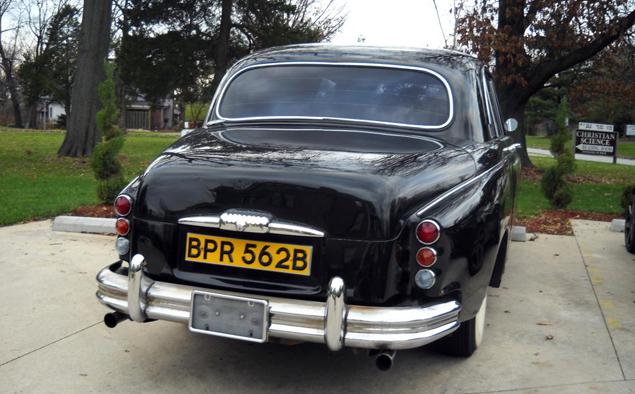
DS420 - the last real Daimler
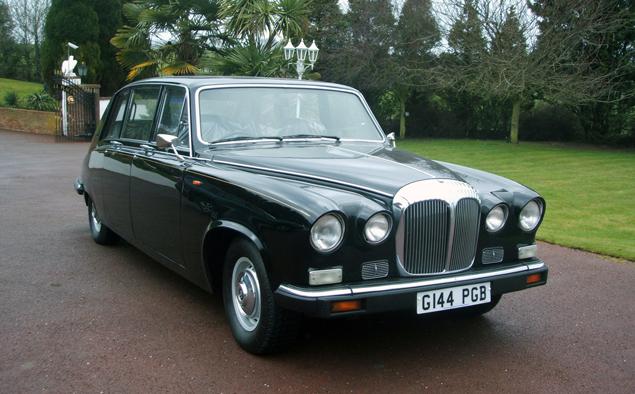
Limousine remained on the line from 1968 to 1992
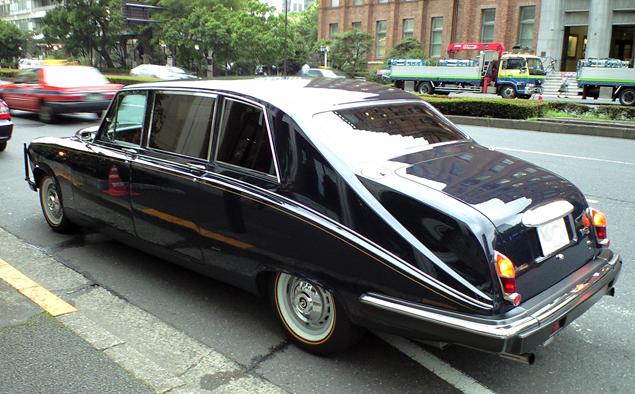
Autobianchi
Who owns: Fiat
Years of living: 1955-1995
Chance of rebirth: a significant
The Italians know how to make two types of cars: super-expensive supercar and supercheap subcompact. But successful manufacturers of automobiles of the middle class in Italy then you will not remember. But they were - for example, the company Autobianchi. Throughout its history it has been inseparably linked with the concern Fiat, Autobianchi because all had "fiatovskie" units.
Hug me and sundry.
Source:
In 2012, Nissan has decided to revive the brand Datsun, and has now introduced several production vehicles, and even the concept car "new" brand. Due to the fact that soon there will be on the road cars, disappeared in 1980, "Motor" Remember that even "sleeping" brands have the largest automakers in the cage. And at the same time assess the probability of their revival.
Not mine. Thanks to this site.

NSU
Who owns: Audi
Years of living: 1905-1977
Chance of rebirth: close to zero
In Germany, over the years were born and died a lot of car brands for which we do not miss something that is not - not even remember them. The same fate would wait and NSU, if not two models: Prinz and Ro 80. It was the first prototype of our "eared" "Zaporozhets" and the second - is the only rotary car won the European competition "Car of the Year».
Company NSU was formed in 1878 - as a manufacturer of sewing machines, and in 1880 moved to the city of Neckarsulm, which will continue to be linked to her story. With sewing machines NSU first switched to bicycles, then motorcycles were added to the range, and the first car left the factory in 1905. Before World War II the company produced unremarkable car, so when Allied air bombardment forced the plant to stop production for a few years, no one was particularly upset. Besides workers NSU, of course. After the war, to the assembly of cars NSU returned only in 1957 - with the very model Prinz.
Inexpensive and compact car in Germany fell to the court, and cases from the company went to the mountain. During the first "prince" followed by a four-Prinz 4 model, which became the object of inspiration to the Zaporozhye engineers, and it was decided to have the money to invest in motorsports and advanced development. So there were sports Sport Prinz and TT. Last, a kind of "super-lock 'was a real storm giants. Extended track, boosted to 70 hp (in the racing versions of up to 90 horsepower) engine, a great drive axle load and weight of just 700 kilograms converted into a mini TT-Porsche.
But the main "trick» NSU steel rotary engines, because the rotor's father was an engineer Felix Wankel NSU.
The first serial NSU rotary engine began in 1964 Wankel-Roadster, but the real star was to be elegant beauty Ro 80.
Alas, the beautiful and progressive design of the car was unreliable and expensive to maintain. Despite the fact that by 1970 the problem was minimized, it was too late - the NSU factory was on the verge of collapse and was bought by Auto Union, which, in turn, in 1964, was part of the group Volkswagen. Wolfsburg took a tough decision: all brands of "Car union" right to life received only Audi, NSU and other brands of Auto Union - DKW and Wanderer - were subject to liquidation. Rear-engined models in the pipeline lasted until 1973, and the last Ro 80 left Neckarsulm in 1977. Now the city is the headquarters of the sports department of Audi - quattro GmbH.
The rights to the brand NSU still owned by Audi, but speculation about the rebirth of the brand management of the company dismiss. After all, no sense in this - branded clip VAG and so full, and automotive heritage NSU very controversial. So, if one day we will see NSU, it probably will not be cars, motorcycles and low-cost in addition to the exclusive Ducati. The postwar history of NSU full polar moments. On the one hand, the brand produced a miserable, but cheap cars like the Prinz ...

... On the other, the flagship brand was incredibly beautiful and technically sophisticated sedan Ro 80

Front Prinz and ZAZ-968 is particularly similar. The "constipation" in the range even had a similar red color

But in the profile immediately clear that these are different machines, because Prinz no "ears»

Ro 80 charmed journalists spacious interior and quiet operation of the engine, for which he received the title of "Car of the Year»

Buyers same car "pleased" high consumption of fuel and oil. But it was not so bad - the engine is difficult to withstand 50 000 kilometers without overhaul

NSU TT - «mad stool" of Nekarzulma. For better cooling of the forced "vent" bonnet was always ajar

The TT livery Jagermeister - one of the cult heroes of German motorsport late 60s.

Sporting runabout can still be seen on the track recently including in the North loop.

Triumph
Who owns: BMW
Years of living: 1923-1984
Chance of rebirth: small
We will not hide the fact that miss little sports roadster in the UK. Yes, and by the British compact sports sedans, we would not have refused. All this could give us a Triumph, who made his name in the small but charming and fast cars. Roadsters TR series and the Spitfire, small sports saloon Herald and Dolomite, Italia coupe and GT6 - these machines is not enough.
Triumph Company was founded in 1886 when Siegfried Bettmann Germans began selling in England, German bikes under the brand Triumph. In 1902, Bettmann and his partner Moritz Schulte grown to produce motorcycles and in 1923 was born the first car company - model 10/20. In the 1930s the firm switched to luxury sedans and coupes, which, however, was not successful, as the luxury brands on the islands has been more than hounds at the royal kennels.
Triumph Company was founded in 1886 when Siegfried Bettmann Germans began selling in England, German bikes under the brand Triumph. In 1902, Bettmann and his partner Moritz Schulte grown to produce motorcycles and in 1923 was born the first car company - model 10/20. In the 1930s the firm switched to luxury sedans and coupes, which, however, was not successful, as the luxury brands on the islands has been more than hounds at the royal kennels.
The company experienced a permanent financial problems and in 1944 it bought the firm Standard (the same that after the war, lapped up the design of our "Victory" model Vanguard). It was then that Triumph became what he is known all over the world - a manufacturer of sports cars. Sport models of the brand perfectly sold in the colonies and dominions of the British Empire, one factory opened in South Africa, and even in the US roadsters TR series enjoyed steady demand.
Therefore, when the state acquired Leyland giant Standard-Triumph, it was saved last brand, and "Standard" have sunk into oblivion. The next two decades, Triumph created a fast, technically difficult, but, alas, unreliable machines. Verhnevalnye 16-valve engine with fuel injection, disc brakes "in a circle" - in these technologies, nobody paid attention, because the machines are literally falling apart for a couple of years, the body will rot tin and sophisticated engines are regularly out of order. Sales fell reputation evaporate, and in 1981, the company has come to the point that began to produce under its own brand ... boring sedan Honda Ballade.
It was agony - three years later, the brand was liquidated. Rights to it remained in British Leyland, who in 1994 under the name Rover Group was sold to BMW.
After spending six years on pointless attempts to revive the corpse of "Rover" Bavarians parted company, selling Land Rover Americans from Ford, and MG and Rover - a British venture holding Phoenix. British investors are required to sell them a complete set of the legendary island of brands, but the MINI and Triumph Germans left behind. Who knows, maybe one day the Bavarians still dare to release a small rear-drive roadster cheaper Z4?
Posted in [mergetime] 1392043840 [/ mergetime]
What else have BMW?
Riley
Under this brand British Leyland group released a more comfortable version of the Austin and Morris. Including the classic MINI. In England, appear regularly rumors that BMW could revive a forgotten brand for luxury versions of MINI. But these are just rumors. Triumph Italia - one of the rarest cars of mark: it was released only 329 machines

Technically identical to the coupe roadster TR3, but because of the body of Vignale it cost $ 1,000 more expensive

The top position of the camshaft and two large carburettor allows the engine Triumph TR3A to give 100 horsepower at two liters of volume

Popularity Triumph roadster forced to open additional plants for its production, two in Belgium and one in South Africa and Australia

Family Herald was on the line from 1959 to 1964 and was completely devoid of sportiness.

Herald produced in the back of a two-door sedan, a convertible and a three-door station wagon.

Triumph Dolomite Sprint - the first mass car with four valves per cylinder. From 1972 to 1980, was released almost 23 000 vehicles

The power unit gave out 135 horsepower and give in even greater force, the making of Sprint formidable fighter touring championships in those years

GT6 coupe were produced from 1968 to 1973 and has sold 31,000 copies

Spitfire Roadster assigned the role of a younger model in the line of open cars Triumph. In this photo, a model of the first generation (1962-1964)

Despite the tiny motor (1, 1 liter), Spitfire enjoyed strong demand in the US

Triumph 10/20 - the first car brand

Model 10/20 has a four - cabin was located behind the hinged "Teschin place»

TR3A Roadster enjoyed the crazy demand in the US

The roadster was not lifting the side windows. In case of bad weather they had to be screwed together with the frame

Honda Ballade was not so terrible, and the car, but the fact that Triumph has released before, it does not compare

From 1981 to 1983, it was issued 214,000 sedans Triumph Acclaim. Ballade was much more popular

Technically Ballade / Acclaim repeated Honda Civic. All the differences are in design

Large sedan Riley 4 boasted designed by Pininfarina

Riley Elf - this is Austin Mini with the ugly luggage and improved bundle

Talbot
Who owns: PSA
Years of living: 1903-1992 (with a break in the years 1960-1978)
Chance of rebirth: great
Perhaps of all the brands in our survey was Talbot gives the greatest marketing freedom. Over the years, produced under this brand and the luxury coupe segment of ultra-luxury, and budgetary hatchbacks and sports cars. It all began with the French car Clement-Bayard, which were sold in the UK under the name Clement-Talbot. In 1919, the British importer has bought Paris carmaker Darracq (the owners of which, however, were English), and the car got a double name Talbot-Darracq. Next name change occurred in 1935, when the brand was in the hands of Antonio Lago.
Under the name Talbot-Lago company produced luxury cars, and even in 1950, took part in the first season of Formula 1 (though the results of the patriots of France, it is better not to remember). But the celebration of a beautiful life ended in 1958 when the brand fell into the hands concern Simca. The new owners have made Talbot in luxury version of the model manufacturer Simca. In 1967, the group bought both brands Chrysler, dreamed of building a European empire, and after the collapse of the separation Chrysler of Europe and its sales group PSA Peugeot Citroen Talbot dropped even lower in the ranking. Talbot 80 - a budget-Samba and Horizon.
The last moment of glory for the Talbot - Constructors Championship in the World Rally Championship in 1981, when the Guy Frekelen and Henri Toivonen on the hot-hatch Talbot Sunbeam Lotus were stable pilots Ford. However, personal title yet sailed to Mark Allen in the Escort. In the mid-80 production cars Talbot was stopped - a new model of Arizona entered the market under the name Peugeot 309, and the last was the van Talbot Express (Fiat Ducato).
Recently there were rumors that the brand will revive the Talbot for the production of low-end models PSA, but sedans C (408 / C4 Sedan) and B (301 / C-Elysee) have entered the market under the familiar brands of Peugeot and Citroen. On the one hand, PSA is not up to fat, on the other hand, a successful project like Dacia budget could become a life-saving straw.
What else is there left from PSA?
Simca
The second fragment of the European Chrysler - brand Simca - no such history, no such success in the race, nor of such stunning cars like Talbot. Therefore, the probability of revival "Simcoe" close to zero. These luxury cars Talbot-Lago produced before the war. The photo coupe T150C 1938

The authorship of the design studio owned by Figoni et Falaschi

Talbot-Lago T26-C went out at the start of the first season in the history of Formula 1

Louis Rosier even twice missed the podium at the Grand Prix of Belgium and Switzerland

After just 30 years of its former greatness was gone

In vogue 80s arc security Talbot Samba has been fixed

Talbot Sunbeam even though he was a Frenchman by birth, but was manufactured in England

Talbot Sunbeam Lotus was terrible hot hatch - his engine gave out 150 horsepower

Motor rally version gave 250 hp. Interestingly, the leaders of the team crew Frekelen / Todt waiting for the fate of a successful sports managers

"Chip" sedan Aronde P60 - semi-automatic gearbox Simcamatic

Simca 1301/1501 - a real survivor. The model was produced from 1962 to 1975

Simca 1307 - "Car of the Year" and the prototype of "Moskvich-2141»

Daimler
Who owns: Tata
Years of living: 1896-2007
Chance of rebirth: a very large
"Aristocrats choose Daimler, nouveaux riches - Rolls-Royce». So we are talking about the British limousines in the 1950s. Daimler - one of the oldest manufacturers of the UK's favorite vehicles of several generations of British, Swedish and Danish kings, the real status symbol. But where did the German name is the same as that of Daimler AG? The fact is that the engineer Richard Sims bought Gottlieb Daimler the right to use its brand in the UK with all the patents for the internal combustion engine and samobegly crew, but did not pull the organization of production and sold all the rights to William Lawson, which began in 1896 production Car.
Already two years later, Prince Albert of Wales (the future King Edward VII) 6 Daimler chose HP as the personal transport. Up until the 1950s it was Daimler, rather than Rolls-Royce limousines were official ceremonial of the British court. But to achieve this mark crossed out problems with the transmission. After several failures of limousines "Royal Mews" (as the islands are called special purpose local garage) the role of ceremonial cars moved to Rolls-Royce. However, to mess Queen Elizabeth II Daimler still managed. Furthermore, Her Majesty so admired cars from Coventry, since then on an ongoing basis using Daimler's as personal transport. And until recently, the queen herself was not averse to sit behind the wheel of his Super Eight.
With the loss of the status of royal affairs supplier Daimler rolled down. In 1960, the brand has acquired Jaguar, and since then all the cars with the letter D on the grid was a copy of "wild cats" - the last own project was a limousine DR450. But in the 1960 - 1970 range Daimler was still wide. Luxury version were all models of Jaguar, including a coupe and a sedan based on the 420G was constructed luxury limousine DS420, whose was not in the "cat" scheme. That was the last DS420 Daimler, who happens to carry monarchs (but only Scandinavian) on formal occasions. In the last 10 years, Daimler's range has shrunk to a single model - the top-end version of the Jaguar XJ, is different from a donor just grille.
With the change of generation XJ lost twin brother, but Indians from Tata, bought in 2008, Jaguar-Land Rover (and owned JLR rights to the brand Daimler), have repeatedly stated that it is not averse to revive the brand to gather underneath limousines level Rolls-Royce Phantom and Bentley Mulsane. Not so long ago in the network got renders XJ c high roof especially for Chinese. Who knows, maybe this is the new Daimler? Something tells his appreciate not only the Chinese, but also British. And the most blue-blooded. This luxury limousine Light Straight Eight in the 1930 budget was considered a model in the range Daimler

Row "eight" volume of 3960 cubic centimeters gave out 95 horsepower

Among the owners of high-Light Straight Eight was the Lord Mayor of London

Last Daimler - Sedan Super Eight. Even the 10 differences from the Jaguar XJ is hard to find

Compressor "eight» Daimler gave out the same 400 horsepower that XJR.

Limousine DR450 - a real giant, the length of the car more than 5, 7 meters

The big advantage of Daimler was the price - £ 3558 against 10 700 lb at the Rolls-Royce Phantom V

C 1961 to 1968 was released only 864 limousine

DS420 - the last real Daimler

Limousine remained on the line from 1968 to 1992

Autobianchi
Who owns: Fiat
Years of living: 1955-1995
Chance of rebirth: a significant
The Italians know how to make two types of cars: super-expensive supercar and supercheap subcompact. But successful manufacturers of automobiles of the middle class in Italy then you will not remember. But they were - for example, the company Autobianchi. Throughout its history it has been inseparably linked with the concern Fiat, Autobianchi because all had "fiatovskie" units.
Hug me and sundry.
Source:

